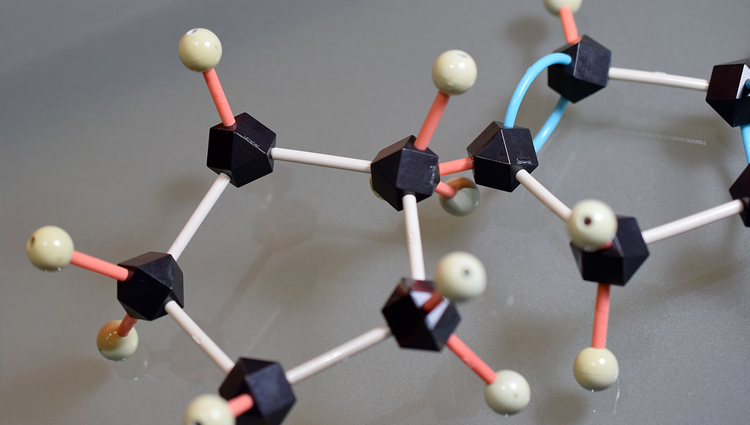Long Oil Plume Mapped In Detail

(Inside Science) -- With the Deepwater Horizon well capped and the oil slick disappearing from the surface, scientists and politicians are paying close attention to deep clouds of oil spill material that remain thousands of feet deep.
At a hearing in Washington on Thursday, members of Congress questioned representatives from government agencies and the scientific community about this residual contamination from the April 22 disaster.
"We have yet to see the full picture of hazards posed by this spill," said Rep. Edward Markey, D-Mass. "Are the clouds of oil suspended below the ocean's surface still a concern?"
Scientists released the most detailed snapshot yet of an underwater oil plume -- a region where oil and gas that didn't rise to the surface remains trapped -- during another press conference on Thursday in Washington.
Based on data collected in June, the snapshot reveals a stable cloud of hydrocarbons at least 22 miles long hovering two-thirds of mile beneath the surface. At the time, this plume was creeping southwest from the broken well at a speed of 4 miles per day.
According to the measurements published in the journal Science, components of oil mixed into the water were breaking down more slowly than previously thought, at a speed that could allow the plume to linger for months or years.
To the naked eye, a jar of water collected from the plume looks like spring water. But the impact of the clear, dilute materials it contains remains murky. The total amount of hydrocarbons in the plume is still unknown -- as are its exact composition, effect on microbes, and environmental risks to the ecosystem.
"This was a forensic snapshot back in late June," said Richard Camilli, a scientist at the Woods Hole Oceanographic Institution in Mass. "Without a complete picture of all of the components, we can't say much about its bioactivity or toxicity."
In June, Camilli and his team spent 10 days sampling deep waters with equipment lowered on a cable from a ship and with an unmanned submersible previously used to study vents at the bottom of the oceans. Sensors aboard these devices detected chemicals present at different depths, and water samples were shipped off for additional testing at onshore laboratories.
This analysis is still in progress, but measurements of the volatile elements of the cloud -- similar to the components of gasoline -- confirm the plume's origins.
"It shows fairly clearly that this plume was created by the Macando site at the Deepwater Horizon oil well," said Camilli. "It was not created by naturally-occurring seeps."
Oil plumes deep in Gulf waters were first discovered in May by scientists from the University of Georgia and the University of South Florida. At the time, officials at BP disputed the finding. But subsequent testing from multiple groups of scientists -- including the National Oceanic and Atmospheric Administration -- confirmed their presence.
"Think of it as gas-saturated oil that has been shot out of a deep sea cannon under intense pressure," Samantha Joye wrote about the plume she discovered on the University of Georgia's Gulf Oil Blog. "It’s like putting olive oil in a spray can, pressurizing it and pushing the spray button. What comes out when you push that button? A mist of olive oil. This well is leaking a mist of oil that is settling out in the deep sea."
The May measurements also detected oxygen levels within plumes as much as 30 percent lower than normal oxygen levels -- which were thought to be a sign that oil-eating bacteria in the water were furiously gobbling up the hydrocarbons. If the bacteria continued to consume oil and oxygen at this speed, warned Joye, they could remove enough oxygen from the water to create a dead zone incapable of supporting life.
This week, Robert Hallberg, who creates simulations of ocean dynamics at Princeton University in N.J., forecasted that this sudden dip in oxygen would peak in October and dissipate over time.
"Oxygen drawdown will go away slowly, as the tainted water is mixed with Gulf waters that weren't affected," Hallberg said in a press release. "We're estimating a couple of years before the dead zone has dissipated."
The newly analyzed June data from the Woods Hole scientists, however, found no such oxygen anomalies. According to their calculation, microbial degradation in the deep cold waters seems to be much slower than that of bacteria living near the surface, and any dead zones would take months to form.
Speaking before Congress, Paul Anastas of the Environmental Protection Agency agreed that oxygen deprivation is not an immediate risk.
"Our monitoring results also show that oxygen levels are not being depleted to dangerous levels," Anastas said.
The Woods Hole Oceanographic Institution researchers said that one explanation for the discrepancy was that the sensors used in previous measurements are known to perform poorly when contaminated with oil. But Daniel Valentine from the University of California, Santa Barbara, who detected low oxygen levels in May, said that his group double-checked the sensors with a second technique. Valentine said that bacterial activity may be changing over time, as oil mixes with the water and as bacteria selectively eat up different components of the mixture.
"It's like going to an all-you-can-eat buffet at Sizzler," said Valentine. "Do you go to the filet mignon or the greasy taco bar first? Organisms are picking certain compounds and leaving others alone, and there's likely to be a transition in what compounds are being consumed."
The overall ecological impact of these plumes also depends on how much of the total spill they contain, which remains a contentious question.
On August 4, a team led by Secretary of Energy Steven Chu and the U.S. Geological Survey estimated that 4.1 million barrels of oil spilled into the Gulf, making it the worst oil rig accident in history.
Another group of scientists led by the Department of the Interior and NOAA estimated that cleanup efforts and natural processes have removed much of the spill, leaving about 24 percent in Gulf waters, "dispersed as microscopic droplets," according to their report.
But Joye and a group of scientists working with the Georgia Sea Grant program disagree. They suggest that 70-80 percent of the spill may still be present in Gulf waters.
To resolve these lingering questions about the plumes, scientists are continuing to analyze deep water samples to calculate the concentration of hydrocarbons. Everyone involves agrees that the Deepwater Horizon spill is unprecedented -- a tragic manmade experiment unlike anything ever studied -- requiring close, continued testing and monitoring in its aftermath.
"We don't live in a world of CSI," cautioned Woods Hole scientist Christopher Reddy. "We all want data in eight seconds, but it takes a long time to analyze these samples."

